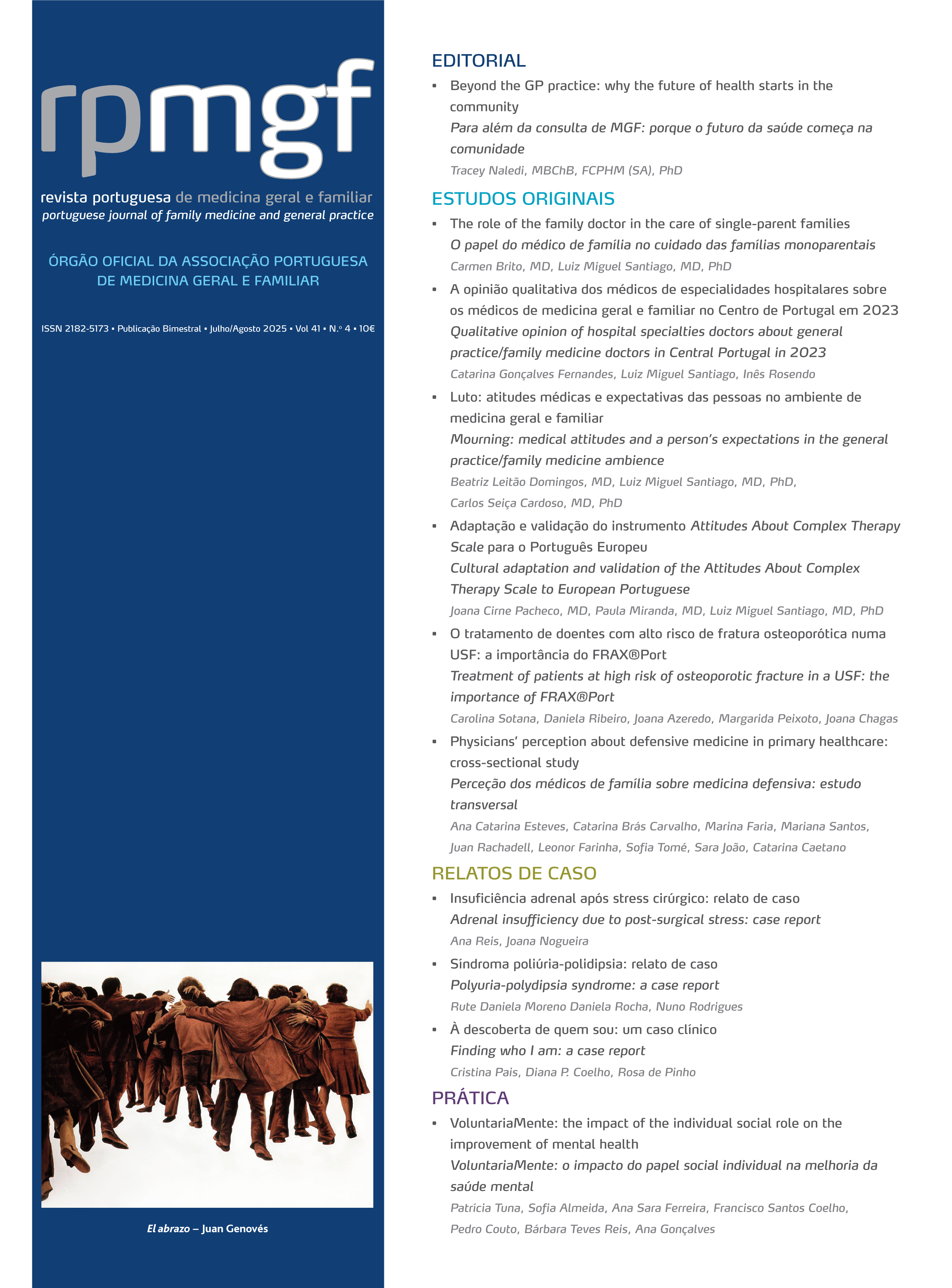Finding who I am: a case report
DOI:
https://doi.org/10.32385/rpmgf.v41i4.13779Keywords:
Gender identity, Gender incongruence, Case reportAbstract
Introduction: An individual’s gender identity reflects a profound and deeply experienced sense of their gender. In recent years, we have seen a significant increase in reports of gender incongruence, making it essential to update health professionals on this issue. So, we intend to remind the criteria for an early identification of gender incongruence and a suitable follow-up by the family doctor.
Case description: We report on the case of a 14-year-old overweight girl who was brought to a medical appointment by her mother due to concerns about low self-esteem and isolation. In the appointment, multiple dietary errors and feelings of sadness stand out, as she considers herself gender fluid, which the family does not accept. Lifestyle changes were advised and referred to clinical psychology. One month later, obesity was realized, so an analytical study and a nutrition appointment were requested. Seven months later, the patient identifies herself as male gender and intends to change sex. In this appointment, signs of self-harm behaviour and unstructured suicidal ideation were identified. Given this depressive disorder, with self-harm behaviour, escitalopram was prescribed. After beginning this therapy, a good adaptation to the medication was observed, with a decrease in episodes of binge eating in BMI and an absence of self-harm behaviour and suicidal thoughts. Subsequently, the patient was referred to pedopsychiatry.
Comment: The family doctor is, most times, the patient’s first contact with health care, assuming a privileged position for the early diagnosis of gender incongruence and appropriate referral. The family doctor must understand the development of the individual’s gender identity, current experience, and future goals to improve the psychological well-being, quality of life, and sense of self-realization of the patient, often following up on the path for the individual’s gender change and the acceptance by the family.
Downloads
References
1. Olivera AG, Vilaça AF, Gonçalves DT. Da transexualidade à disforia de género: protocolo de abordagem e orientação nos cuidados de saúde primários [From transsexuality to gender dysphoria: how to approach and to guide in primary health care]. Rev Port Med Geral Fam. 2019;35(3):210-22. Portuguese
2. The World Professional Association for Transgender Health. Standards of care for the health of transsexual, transgender, and gender nonconforming people. 7th version. WPATH; 2012.
3. American Psychological Association. Guidelines for psychological practice with transgender and gender nonconforming people. Am Psychol. 2015;70(9):832-64.
4. Shumer DE, Nokoff NJ, Spack NP. Advances in the care of transgender children and adolescents. Adv Pediatr. 2016;63(1):79-102.
5. Call DC, Challa M, Telingator CJ. Providing affirmative care to transgender and gender diverse youth: disparities, interventions, and outcomes. Curr Psychiatry Rep. 2021;23(6):33.
6. Royal College of Psychiatrists. Good practice guidelines for the assessment and treatment of adults for the assessment and treatment of adults with gender dysphoria. London: Royal College of Psychiatrists; 2013.
Downloads
Published
Issue
Section
License
Copyright (c) 2025 Portuguese Journal of Family Medicine and General Practice

This work is licensed under a Creative Commons Attribution-NonCommercial-NoDerivatives 4.0 International License.
The authors will assign to the RPMGF the sole right to publish and distribute the content of the manuscript specified in this declaration via physical, electronic, broadcasting or any other medium that may come into existence. They also grant the RPMGF the right to use and exploit this manuscript, in particular by assigning, selling or licensing its content. This permission is permanent and takes effect from the moment the manuscript is submitted, has the maximum duration allowed by applicable Portuguese or international law and is of worldwide scope. The authors further declare that this assignment is made free of charge. If the RPMGF informs the authors that it is not going to publish their manuscript, the exclusive assignment of rights ceases forthwith.
The authors authorise the RPMGF (or any entity it may appoint) to act on their behalf when it believes that copyright may have been infringed.





